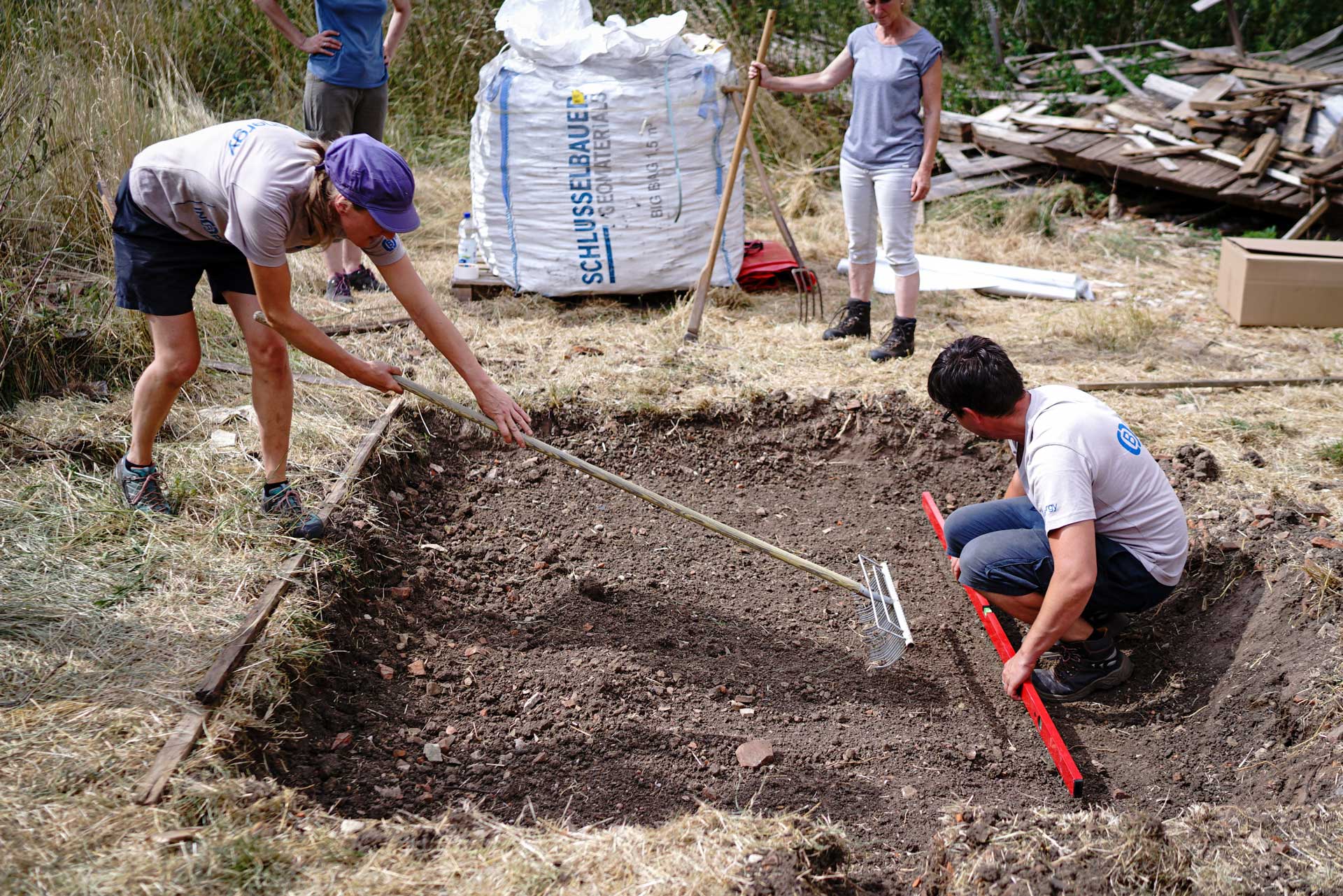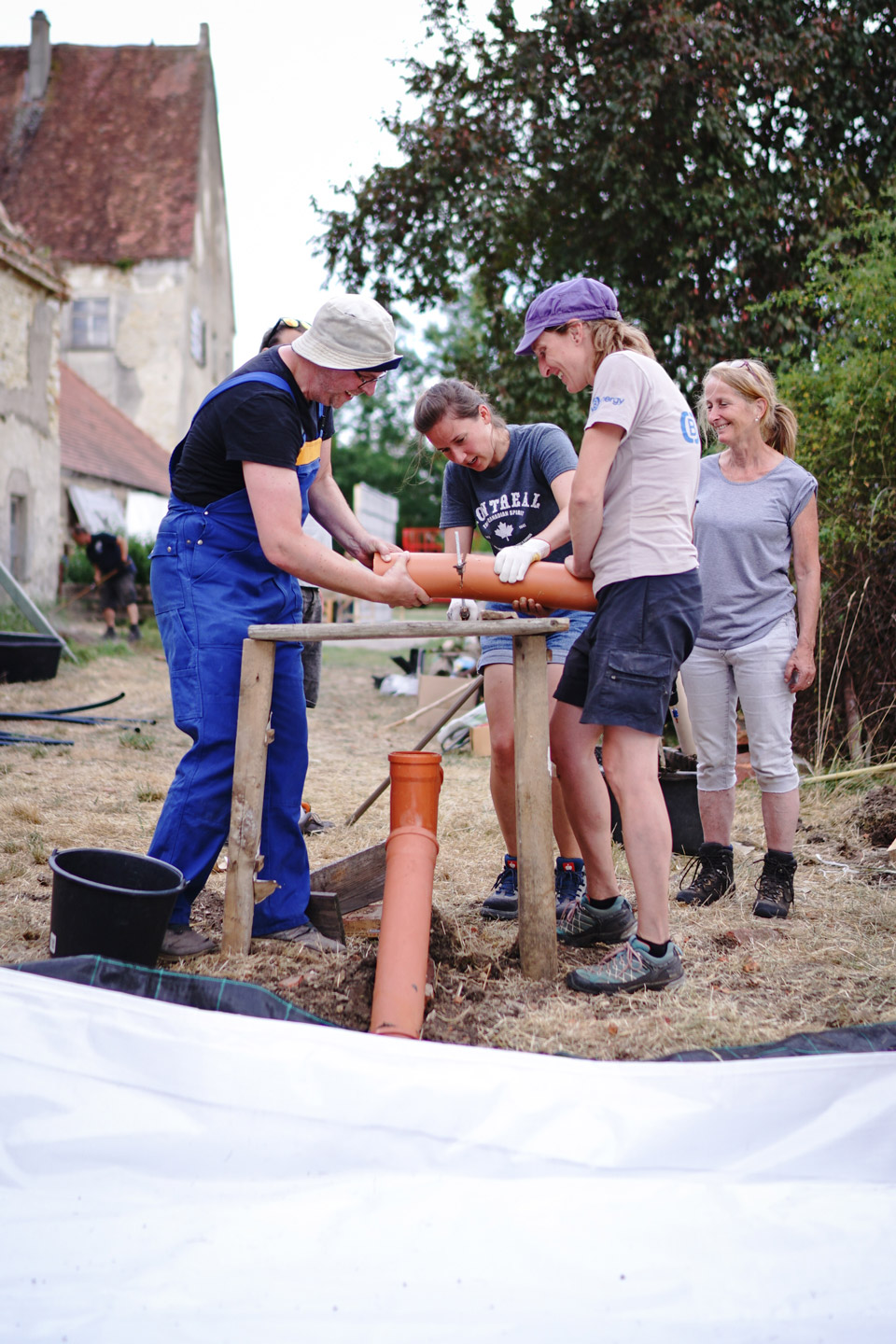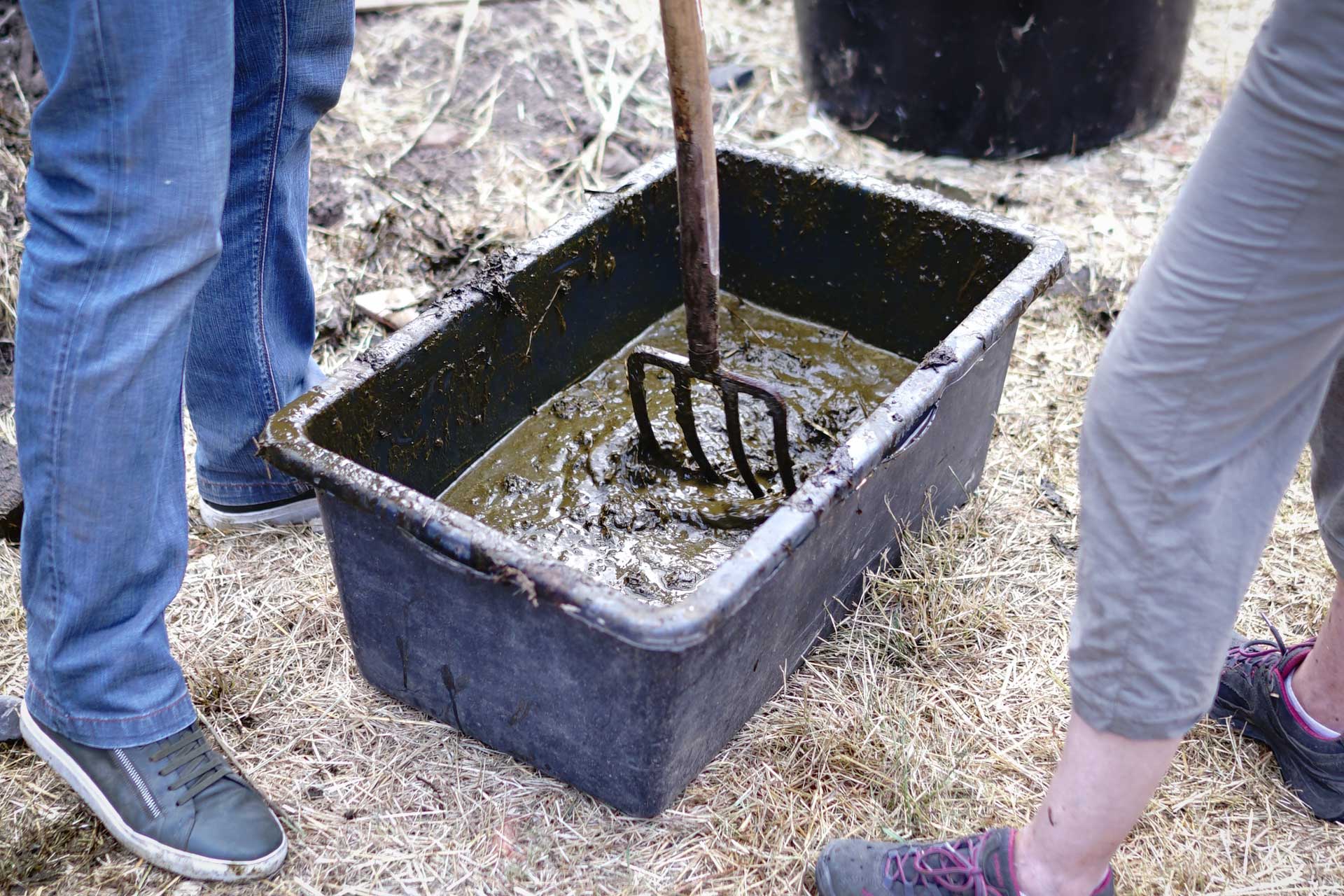Small-scale unit for Biogas, Oberbechingen, Germany

As part of our 30th anniversary, we organized the Transsolar Experience Days with various workshops- One project was planning and building a small-scale biogas unit.
To build your own small-scale biogas unit, you need some space, plus water and organic materials. What is waste for humans, still has lots of usable energy. For example, with 10 kilograms of kitchen waste or the equivalent of 20 kilograms of manure, cow or horse dung (the leftovers of herbivores have the advantage of not being disgusting) about 1m³ of biogas is produced. This can be used for 2 to 4 hours of cooking.
In a biogas unit you let bacteria work. Anaerobically, in the absence of air and oxygen, they decompose the organic material to CO2 and methane. What remains is liquid organic fertilizer that can be reused in the garden or in agriculture.
Methane, chemically CH4, is widely used worldwide and is the main component of natural gas. It does not stink and burns soot-free to CO2 and water vapor. The use of methane as biogas also has a much smaller ecological footprint, because when it is burned, it releases only the CO2 that units have previously extracted from the atmosphere. This makes such a unit CO2-neutral; therefore, environmentally and climate friendly.
Just like in a cow's stomach, the bacteria in the unit also need some warmth. They are and remain active when the temperature does not fluctuate. Thus, in Germany, such a biogas unit must be heated somewhat to function optimally. In summer, this can be done by solar energy. Similarly analogous to an animal digestive system is also the daily filling and emptying with about 70 liters of liquid each for continuous use.
The biogas unit must be gas-tight to close. A simple solution is a prefabricated closed "bag" made of foil, which is well bedded at the bottom and also covered at the top so that the unit is protected. With the inlets and outlets closed, the biogas released from the mass rises and accumulates at the top of the container. If necessary, it can then be discharged via a hose into gas-tight foil containers and therefore also stored. These also allow a portion of 1,000 liters to be transported as a "backpack."
For cooking, the bag is connected to a burner with a hose line. For the gas to flow out in the desired quantity, some pressure is provided by placing a weight on the bag. Such a unit makes it possible to cook CO2 neutral and free of charge in operation, with a manageable and not to complex technology.
If you are interested in such a CE certified small scaled biogas unit and like to see film contributions, search the internet for Katrin Pütz.
The click on the link leads to the homepage of (B)energy: www.be-nrg.com













